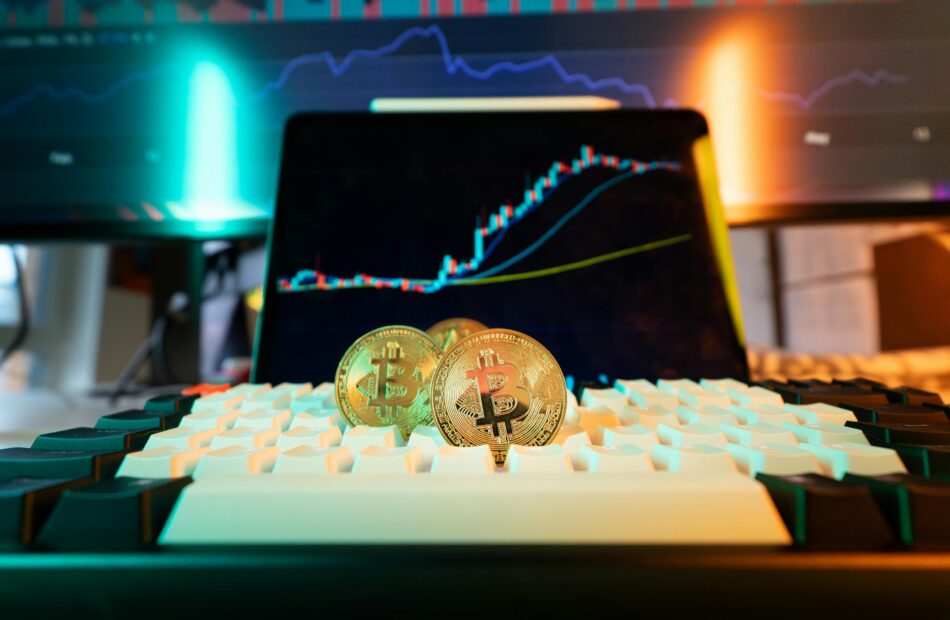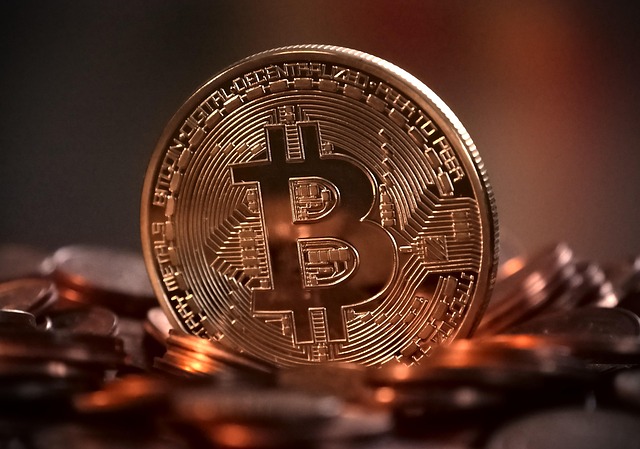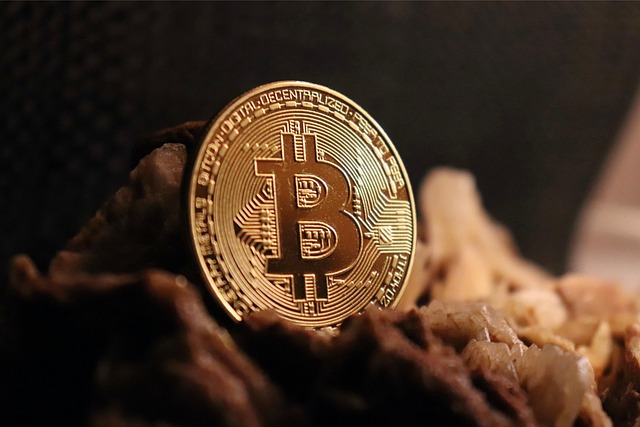Bitcoin price chart looks set for $100K, SUI, AVAX, TRUMP and TAO expected to follow
Key points:Bitcoin booked a 10% gain in the past week and technical indicators remain bullish going into a new week.Analysts expect Bitcoin to gain an additional 40% by the end of the yearSelect altcoins are showing a positive bias on improving crypto sentiment.Bitcoin (BTC) rose more than 10% this week as buyers made a strong comeback, pushing the price to the overhead resistance at $95,000. Although buyers are struggling to clear the overhead hurdle, a positive sign is that they have not given up much ground to the bears.The sharp up move is backed by solid buying in the US spot Bitcoin exchange-traded funds (ETFs), which witnessed inflows of $3.06 billion, according to Farside Investors data. Bloomberg ETF analyst Eric Balchunas said in a post on X that it was really notable to see “HOW FAST the flows can go from 1st gear to 5th gear.”Crypto market data daily view. Source: Coin360After Bitcoin’s recovery, 21st Capital co-founder Sina said in a post on X that Bitcoin reclaimed the power-law price. Sina’s Bitcoin Quantile Model projects Bitcoin to reach between $130,000 and $163,000 before the end of 2025. Anonymous Bitcoin analyst apsk32 had an even bigger target of more than $200,000 for Bitcoin in Q4 of this year.Could Bitcoin maintain its momentum and rise above the overhead resistance? Let’s study the charts of the cryptocurrencies that look strong in the near term.Bitcoin price predictionBitcoin has been witnessing a tough battle between the bulls and the bears near the crucial $95,000 level.BTC/USDT daily chart. Source: Cointelegraph/TradingViewThe upsloping 20-day exponential moving average ($88,619) and the relative strength index (RSI) near the overbought zone indicate that bulls are in command. A close above $95,000 could propel the BTC/USDT pair to $100,000 and eventually to $107,000. Sellers are expected to aggressively defend the zone between $107,000 and $109,588.The 20-day EMA is the critical near-term support to watch out for because a break below it brings the large $95,000 to $73,777 range into play.BTC/USDT 4-hour chart. Source: Cointelegraph/TradingViewThe 4-hour chart shows the bears are fiercely defending the $95,000 level but are struggling to sink the pair below the 20-EMA. If the price rebounds off the 20-EMA, it enhances the prospects of a break above $95,000. The pair could then surge to $100,000.Instead, if the price maintains below the 20-EMA, the pair could tumble to the 50-simple moving average. This is an important level for the bulls to defend because a break below it could pull the pair to $86,000.Sui price predictionSui (SUI) has been facing resistance near $3.90, but the shallow pullback suggests that the bulls are in no hurry to dump their positions.SUI/USDT daily chart. Source: Cointelegraph/TradingViewIf the price stays above the 38.2% Fibonacci retracement level of $3.14, the bulls will make another attempt to shove the SUI/USDT pair above $3.90. If they can pull it off, the pair may skyrocket to $4.25 and then to $5.Contrary to this assumption, if the price turns down and breaks below $3.14, it signals the start of a deeper correction toward the 50% retracement level of $2.94. Buyers are expected to fiercely defend the zone between $2.94 and the 20-day EMA ($2.69).SUI/USDT 4-hour chart. Source: Cointelegraph/TradingViewThe 4-hour chart shows that the pair is finding support at the 20-EMA, but the sellers are active at higher levels. The bears will again attempt to sink the pair below the 20-EMA. If they succeed, the pair could slump to $3.14.Buyers will have to swiftly push the price above the $3.81 to $3.90 overhead resistance zone if they want to retain the advantage. If they do that, the pair could start the next leg of the up move to $4.25.Avalanche price predictionAvalanche (AVAX) has been range-bound between $23.50 and $15.27 for the past few days. In a range, traders usually buy near the support and sell close to the resistance.AVAX/USDT daily chart. Source: Cointelegraph/TradingViewAlthough buyers have failed to push the price above $23.50, a positive sign is that they have not ceded much ground to the bears. That increases the likelihood of a break above $23.50. If that happens, the AVAX/USDT pair will complete a double-bottom pattern, which has a target objective of $31.73.This optimistic view will be negated in the near term if the price turns down and breaks below the moving averages. The pair may then remain stuck inside the range for a few more days.AVAX/USDT 4-hour chart. Source: Cointelegraph/TradingViewThe pair has been consolidating in a narrow range between $21.60 and $23.10 for some time. That suggests the bulls are holding on to their positions as they anticipate another leg higher. If buyers propel the price above $23.10, the pair could surge to $25. There is resistance at $23.50, but it is likely to be crossed.Alternatively, a drop below $21.60 signals that the bulls have given up. That may pull the price down to $19.50.Related: Bitcoin trades at ‘40% discount’ as spot BTC ETF buying soars to $3B in one weekOfficial Trump price predictionOfficial Trump (TRUMP) surged above the $12.45 resistance on April 23 and held the retest of the breakout level on April 24.TRUMP/USDT daily chart. Source: Cointelegraph/TradingViewA rally above $16 is attracting sellers, but a shallow pullback suggests that every minor dip is being purchased. If buyers drive the price above $16, the TRUMP/USDT pair may reach $17.69, where the bears are expected to mount a strong defense. However, if buyers bulldoze their way through, the pair could skyrocket to $19.60 and then to $22.40.Conversely, a deeper pullback suggests that the short-term bulls are booking profits. The zone between $11.56 and $12.45 is expected to act as a solid support. If the price rebounds off the support zone, the pair may swing between $11.56 and $16 for some time. Selling could accelerate if the pair breaks below the 20-day EMA ($10.73).TRUMP/USDT 4-hour chart. Source: Cointelegraph/TradingViewThe pair turned down from $16 but is finding support near the 20-EMA on the 4-hour chart. That suggests the bulls are active at lower levels. Buyers will try to push the price above the $16 overhead resistance, starting the next leg of the uptrend.Contrarily, a break and close below the 20-EMA suggests that the bullish momentum has weakened. The pair may then slump to $14 and later to the solid support near $12. Sellers will be back in the driver’s seat on a drop below $11.50.Bittensor price predictionBittensor (TAO) broke and closed above the downtrend line on April 20, suggesting that the bears are losing their grip.TAO/USDT daily chart. Source: Cointelegraph/TradingViewThe up move is facing resistance at $375, but the pullback is expected to find support at the 20-day EMA ($298). A solid bounce off the 20-day EMA signals a change in sentiment from selling on rallies to buying on dips. The bulls will then attempt to drive the TAO/USDT pair above $375. If they succeed, the next stop may be $495.Contrary to this assumption, if the price turns down and breaks below the downtrend line, it will indicate that the markets have rejected the breakout. The pair then risks falling to $222.TAO/USDT 4-hour chart. Source: Cointelegraph/TradingViewThe pullback is finding support at the 20-EMA on the 4-hour chart. Buyers will try to resume the up move by pushing the price above the $375 resistance. If they manage to do that, the pair could reach $425.Sellers are likely to have other plans. They will try to sink the price below the 20-EMA, opening the doors for a drop to the 50-SMA and later to the downtrend line. A break below the downtrend line tilts the advantage in favor of the bears.This article does not contain investment advice or recommendations. Every investment and trading move involves risk, and readers should conduct their own research when making a decision.
Ethereum community members propose new fee structure for the app layer
Two Ethereum community members, Kevin Owocki and Devansh Mehta, proposed a dynamic fee structure for the Ethereum application layer to strike a balance between revenue generation for app builders and fairness in fee extraction.The April 27 proposal outlined a simple equation that uses a square root function that proportionally lowers the percentage of fees as the funding capital allocated to a particular project grows. Owocki and Mehta explained:”For smaller funding amounts, the fee follows a square root function (sqrt(1000 x N)), providing proportionally higher returns to make building mechanisms for smaller pools worthwhile. For example, if the funding pool is $170,000, then the root of 1000 x 170,000 equals $13,038.4 or 7% is taken as overhead.”The authors of the proposal added that fees would be capped at 1% once a particular application’s funding pool crossed the $10 million level, ensuring that small app builders can develop decentralized applications without excess fees while also encouraging project and funding growth by capping fees as developers scale their applications.A visualization of the proposed fee structure tapering off at higher project funding levels. Source: Ethereum ResearchOwocki and Mehta’s proposal to balance revenue generation and profitability among Ethereum’s app builders reflects the growing calls to reform fee structures and value accrual mechanisms to maintain Ethereum’s economic viability against competing networks.Related: Ethereum’s L2 approach equals many high-throughput chains — Avail execEthereum’s competitors ramp up heat as Ethereum faces revenue crunchIn 2024, the Solana ecosystem onboarded more developers than the Ethereum network, attracting 7,625 new developers compared with Ethereum’s 6,456.Despite the surge in software developers building on the Solana network in 2024, Ethereum remains the dominant ecosystem for attracting developer talent, although the 2024 data shows that position is no longer uncontested.The Solana network is now the number two choice for decentralized application developers and is catching up to Ethereum. Source: Electric CapitalAccording to onchain analytics firm Santiment, Ethereum fees dropped to five-year lows in April 2025 due to low activity on the Ethereum base layer resulting from reduced demand for smart contract operations like decentralized finance.This reduced demand is leading to many institutions scaling back their Ether (ETH) holdings or selling off portions of their investment as investor sentiment toward the first-ever smart-contract platform continues to erode without any clear catalysts for a reversal.Magazine: Ethereum is destroying the competition in the $16.1T TradFi tokenization race
Federal taxes to be 'substantially reduced' once tariffs set in: Trump
United States President Donald Trump recently said that federal income taxes would be “substantially reduced” or potentially eliminated once the tariff regime fully sets in.In an April 27 Truth Social post, Trump added that the focus of the purported tax cuts would be on individuals making less than $200,000 per year.The US President also said that the “External Revenue Service” — a reference to funding the federal government exclusively through import tariffs instead of the current model of collecting taxes through the Internal Revenue Service (IRS) — is materializing.Eliminating the federal income tax would likely be a positive catalyst for asset prices, including cryptocurrencies, as the increase in disposable income should partially flow back into productive investments. However, this stimulative effect is not guaranteed.Source: Donald TrumpRelated: If Trump fired Powell, what would happen to crypto?Trump’s plan leaves analysts and markets doubtingTrump previously floated the idea of eliminating the federal income tax in an October 2024 appearance on the Joe Rogan Experience, although Trump, who was on the campaign trail at the time, provided scant concrete details on the proposal.The US President suggested that replacing the federal income tax with revenue from import duties would return the US to a time of prosperity seen during the Gilded Age, in the 19th century, when the US did not have a permanent federal income tax.Research conducted by accounting automation company Dancing Numbers found that Trump’s proposal could save the average American $134,809 in lifetime tax payments.Dancing Numbers added that the tax savings could be as much as $325,561 per American if other wage-based income taxes are also eliminated.On April 2, Trump signed an executive order imposing sweeping tariffs on all US trading partners, which included a 10% baseline tariff on all countries and different “reciprocal” tariff rates on countries with import duties on US goods.However, since that time, the Trump administration walked back its tariff policies several times, flip-flopping on tariff rates and when the tariff regime would fully take effect.The Trump administration’s ever-changing rhetoric surrounding trade policies has heightened volatility in the US stock market, caused a rise in US bond yields, and has drawn widespread criticism from financial analysts who say the protectionist trade policies hurt capital markets while achieving little else.Magazine: Harris’ unrealized gains tax could ‘tank markets’: Nansen’s Alex Svanevik, X Hall of Flame
Crypto price manipulation explained: How cybercriminals influence the market
What is crypto price manipulation? When a coin moons out of nowhere and then crashes just as fast — it is rarely pure market magic.Cryptocurrency price manipulation is the dark art of bending the market to your will. It is when insiders or coordinated groups inflate or crash a coin’s price, not through real demand, but through smoke and mirrors. They might fake volume, spread hype, trigger fear, or pull sudden sell-offs — all to trap unsuspecting traders and walk away with the profits.In traditional finance, this kind of behavior gets you fined or jailed. But what about in the world of crypto? It often flies under the radar. With light regulations and heavy emotions in play, the digital asset market has become a playground for manipulators, especially where liquidity is low and oversight is weaker.Here’s the classic playbook:Manipulators create fake demand or fearThe price spikes or crashes based on emotional reactions from other tradersThe manipulators sell or buy at the right momentThe rest of the market suffers the consequences. The most common crypto market manipulation tactics Scammers don’t need magic — they just need market psychology and a few tricks.As the digital asset landscape expands, criminals have honed various crypto price manipulation tactics. Each tactic capitalizes on the market’s volatility and traders’ fear of missing out (FOMO). Let’s break down the most used:Pump-and-dump: This scheme starts with a coordinated group quietly buying a low-cap token. They then ignite hype through influencers, fake news or viral posts to drive the price up rapidly. As retail investors rush in, the group sells at the top — causing the price to crash. Latecomers are left holding devalued tokens, having bought into the illusion of explosive growth.Whale moves: Whales — wallets holding large amounts of crypto – can shift market trends with a single trade. Their massive buy or sell orders influence price direction and trigger emotional responses from smaller traders. Many follow the whale’s lead, thinking they know something others don’t, which compounds the volatility. Some whales use this effect strategically to buy low and sell high.Wash trading: This usually involves a single user who buys and sells the same token to themselves to artificially inflate trading volume. This creates a false sense of activity and demand, misleading investors into thinking the project is more legitimate or liquid than it really is. It’s especially common on unregulated exchanges and can help tokens climb rankings on tracking platforms.Spoofing and layering: In spoofing, manipulators place large fake orders to buy or sell without intending to execute them. This gives the illusion of strong market interest and influences price action. Layering uses multiple fake orders at different price levels to amplify the effect. Once real traders react, the fake orders are removed and the manipulator takes profit, leaving others chasing phantom momentum.Did you know? According to a 2022 study, 70% of transactions on unregulated crypto exchanges are wash trades — with some platforms seeing volumes as high as 80%. Behind the scenes: Advanced crypto price manipulation tactics Not all crypto price manipulation is obvious. Some of it is deeply technical — or done in silence.Beyond basic scams, cybercriminals use more complex tactics to manipulate and sway the market.Bots manipulating crypto prices: High-frequency trading bots can front-run trades, spoof orders, or simulate volume — all faster than any human.Insider trading in crypto: When someone trades on non-public info (like a token listing or partnership), it gives them an unfair edge. And yes — it happens.Oracle manipulation: Hackers sometimes exploit oracles — the tools that feed price data into decentralized finance (DeFi) platforms. Faking a price feed can drain liquidity pools or trick smart contracts.Did you know? In 2020, a hacker used a flash loan to manipulate an oracle on bZx, stealing millions in seconds. It was one of the first examples of oracle-based fraud. Why manipulation works: Psychology over logic In crypto, emotion moves faster than reason — and scammers know it.Even experienced traders fall for manipulation because it plays on powerful instincts. Because the market moves fast, decisions are often made in the heat of the moment — on gut feeling, not deep analysis. And manipulators are experts at pressing the right emotional buttons.Greed is the oldest trick in the book. Everyone wants to catch the next 100x gem, and scammers know how to dress up trash as treasure. A few flashy tweets, a celebrity shoutout and, suddenly, a random coin looks like the ticket to financial freedom.Fear is just as powerful. One big red candle can trigger a chain reaction of panic selling. Manipulators use this to buy back cheap, while everyone else scrambles to exit.FOMO is the final piece. When traders see others making big gains, logic goes out the window. Instead of researching, they ape in, hoping not to be left behind.These emotions are hardwired. They’re faster than logic, and in crypto, speed is everything. Manipulators don’t need to hack wallets or break code — they just hack human behavior. Stir up just the right storm of excitement or dread, and the market plays right into their hands.Did you know? The infamous Squid Game Token soared tens of thousands of percent before crashing to zero. It was a textbook rug pull — but the hype was too loud for many to resist. What crypto price manipulation does to the market One scam doesn’t just hurt victims — it damages the entire ecosystem.Crypto price manipulation doesn’t happen in a vacuum. Every fake pump, every engineered crash, every orchestrated scam chips away at the foundation of the entire crypto ecosystem: trust.When retail traders — especially newcomers — get caught in a pump-and-dump or a whale-induced panic, the damage runs deeper than a single bad trade. Many walk away for good, disillusioned and angry, taking their money and optimism with them. The promise of open, decentralized finance starts to look like just another casino — rigged and unforgiving.And it doesn’t stop there. High-profile cryptocurrency frauds and price manipulation scandals light up the radar of regulators worldwide. Each incident becomes a case study in why crypto “needs to be tamed.” That means stricter rules, more compliance hoops and an overall slowdown in innovation. The free-spirited, experimental energy that drives crypto forward starts to feel boxed in.Meanwhile, legit projects — those building real utility, transparency and long-term value — struggle to rise above the noise. Scam tokens dominate the charts. Shady influencers flood timelines. The signal gets buried under waves of hype and deception.In the end, crypto price manipulation doesn’t just hurt individual investors. It poisons the well for everyone — developers, communities and the future of the space itself.Did you know? The memecoin craze has pulled in not just investors — but celebrities, too. From hyped tokens to sudden rug pulls, in 2024, several celeb-backed crypto projects have gone off the rails, blurring the line between fame and fraud. How to protect yourself from crypto manipulation You can’t control the market — but you can avoid its traps.Here are practical steps to avoid falling for crypto scams and manipulation:DYOR (Do Your Own Research): Don’t rely on TikTok tips or Telegram groups. Look into the token’s team, roadmap, use case and trading history.Watch trading volume: Sudden spikes or weirdly low volume can signal wash trading or a setup for manipulation.Monitor whale activity: Use tools like Whale Alert or blockchain explorers to spot big wallet movements.Use trusted platforms: Stick to exchanges that actively monitor for illegal crypto trading tactics like spoofing and wash trading.Keep learning: Stay up to date on the latest tactics and red flags. Knowledge is your best defense. The push for safer crypto markets The good news? The crypto world is fighting back.The crypto universe might still feel like the digital frontier, but it is no longer a lawless land. Across the ecosystem, the good guys — builders, platforms and policymakers — are stepping in to make the space more transparent, resilient and secure for users.Crypto exchanges are starting to unleash AI-powered surveillance tools designed to spot shady behavior in real time. Wash trading? Spoofing? Pump-and-dump groups? These algorithms are already trained to catch the tricks before they catch you.On the DeFi side, protocols are stepping up with on-chain governance and transparency upgrades. Communities can now vote on key actions, track wallet movements, and call out suspicious patterns — all out in the open.And regulators? They are finally moving from the sidelines to the rulebook. New legislation is targeting insider trading, fake promotions and market abuse, bringing long-overdue accountability to crypto’s fast lanes.Is the system foolproof yet? Far from it. But every smart contract, policy update and AI model pushing back against manipulation is a win for the space.So, if crypto scams thrive in the dark, knowledge is your flashlight. If a token’s mooning with no clear reason, pause. If something does not feel right, it probably is not. Trust your gut, not the hype. Because in the end, staying informed is your best defense — and your smartest investment.
Michael Saylor hints at Bitcoin purchase as whales stack aggressively
Whales and large institutions continue their aggressive Bitcoin accumulation, with Strategy hinting at another Bitcoin investment that may be announced on Monday.Strategy co-founder Michael Saylor hinted at another imminent Bitcoin (BTC) investment on April 27, a week after the firm acquired $555 million worth of Bitcoin at an average price of $84,785 per coin.“Stay Humble. Stack Sats,” Saylor wrote, spurring investor speculation of the size of the firm’s next Bitcoin investment.Source: Michael Saylor“1.4-1.6b range imo,” wrote popular blockchain analyst RunnerXBT in anticipation of Saylor’s announcement, which would make it three times as large as Strategy’s previous investment.Related: Bitcoin treasury firms driving $200T hyperbitcoinization — Adam BackStrategy is the world’s largest corporate Bitcoin holder with over 538,200 Bitcoin worth over $50.5 billion, Bitbo data shows.The 10 largest Bitcoin holding companies. Source: BitboThe firm’s investment philosophy inspired other companies to adopt Bitcoin, including Japanese investment firm Metaplanet, which surpassed 5,000 BTC holdings on April 24, in an effort to lead Bitcoin adoption in Asia.Related: Trump fought the bond market, the bond market won: Saifedean AmmousETFs log $3 billion, and whales aggressively accumulate BitcoinWhales, or large Bitcoin investors, are also accumulating Bitcoin under the $100,000 psychological mark.Whale wallets holding at least $1 million worth of Bitcoin restarted their accumulation at the beginning of April, increasing from 124,000 wallets on April 7 to over 137,600 wallets on April 26, Glassnode data shows.Bitcoin addresses with over $1 million balance. Source: Glassnode The aggressive whale accumulation helped Bitcoin’s recovery to above $94,000, Nexo dispatch analyst Iliya Kalchev told Cointelegraph, adding:“Wallets holding over 10,000 BTC have been aggressively accumulating, with a trend score of 0.90, while smaller investors are also pivoting toward long-term holding.”“Trump confirmed discussions with China are ongoing, with Beijing offering exemptions on select US imports, suggesting a softening tone. Still, markets are awaiting tangible action before re-rating global risk,” he added.Bitcoin exchange-traded fund (ETF) inflows have also contributed to Bitcoin’s near 12% weekly recovery.Bitcoin ETF Flow, USD, million. Source: Farside InvestorsUS spot Bitcoin ETFs recorded over $3 billion worth of cumulative net inflows during the past week, marking their second-highest week of investments since launching, Farside Investors data shows.Magazine: Bitcoin’s odds of June highs, SOL’s $485M outflows, and more: Hodler’s Digest, March 2 – 8
The cost of innovation — Regulations are Web3’s greatest asset
Opinion by: Hedi Navazan, chief compliance officer at 1inchWeb3 needs a clear regulatory system that addresses innovation bottlenecks and user safety in decentralized finance (DeFi). A one-size-fits-all approach cannot be achieved to regulate DeFi. The industry needs custom, risk-based approaches that balance innovation, security and compliance.DeFi’s challenges and rulesA common critique is that regulatory scrutiny leads to the death of innovation, tracing this situation back to the Biden administration. In 2022, uncertainty for crypto businesses increased following lawsuits against Coinbase, Binance and OpenSea for alleged violations of securities laws.Under the US administration, the Securities and Exchange Commission agreed to dismiss the lawsuit against Coinbase, as the agency reversed the crypto stance, hinting at a path toward regulation with clear boundaries.Many would argue that the same risk is the same rule. Imposing traditional finance requirements on DeFi simply will not work from many aspects but the most technical challenges.Openness, transparency, immutability, and automation are key parameters of DeFi. Without clear regulations, however, the prevalent issue of “Ponzi-like schemes” can divert focus from effective innovation use cases to conjuring a “deceptive perception” of blockchain technology. Guidance and clarity from regulatory bodies can reduce significant risks for retail users.Policymakers should take time to understand DeFi’s architecture before introducing restrictive measures. DeFi needs risk-based regulatory models that understand its architecture and address illicit activity and consumer protection. Self-regulatory frameworks cultivate transparency and security in DeFiThe entire industry highly recommends implementing a self-regulatory framework that ensures continuous innovation while simultaneously ensuring consumer safety and financial transparency. Take the example of DeFi platforms that have taken a self-regulatory approach by implementing robust security measures, including transaction monitoring, wallet screening and implementing a blacklist mechanism that restricts a wallet of suspicion with illicit activity. Sound security measures would help DeFi projects monitor onchain activity and prevent system misuse. Self-regulation can help DeFi projects operate with greater legitimacy, yet it may not be the only solution.Clear structure and governance are keyIt’s no secret that institutional players are waiting for the regulatory green light. Adding to the list of regulatory frameworks, Markets in Crypto-Assets (MiCA) sets stepping stones for future DeFi regulations that can lead to institutional adoption of DeFi. It provides businesses with regulatory clarity and a framework to operate.Many crypto projects will struggle and die as a result of higher compliance costs associated with MiCA, which will enforce a more reliable ecosystem by requiring augmented transparency from issuers and quickly attract institutional capital for innovation. Clear regulations will lead to more investments in projects that support investor trust.Anonymity in crypto is quickly disappearing. Blockchain analytics tools, regulators and companies can monitor suspicious activity while preserving user privacy to some extent. Future adaptations of MiCA regulations can enable compliance-focused DeFi solutions, such as compliant liquidity pools and blockchain-based identity verification.Regulatory clarity can break barriers to DeFi integrationThe banks’ iron gate has been another significant barrier. Compliance officers frequently witness banks erect walls to keep crypto out. Bank supervisors distance companies that are out of compliance, even if it’s indirect scrutiny or fines, slamming doors on crypto projects’ financial operations. Clear regulations will address this issue and make compliance a facilitator, not a barrier, for DeFi and banking integration. In the future, traditional banks will integrate DeFi. Institutions will not replace banks but will merge DeFi’s efficiencies with TradFi’s structure.Recent: Hester Peirce calls for SEC rulemaking to ‘bake in’ crypto regulationThe repeal of Staff Accounting Bulletin (SAB) 121 in January 2025 mitigated accounting burdens for banks to recognize crypto assets held for customers as both assets and liabilities on their balance sheets. The previous laws created hurdles of increased capital reserve requirements and other regulatory challenges.SAB 122 aims to provide structured solutions from reactive compliance to proactive financial integration — a step toward creating DeFi and banking synergy. Crypto companies must still follow accounting principles and disclosure requirements to protect crypto assets. Clear regulations can increase the frequency of banking use cases, such as custody, reserve backing, asset tokenization, stablecoin issuance and offering accounts to digital asset businesses.Building bridges between regulators and innovators in DeFiExperts pointing out concerns about DeFi’s over-regulation killing innovation can now address them using “regulatory sandboxes.” These dispense startups with a “secure zone” to test their products before committing to full-scale regulatory mandates. For example, startups in the United Kingdom under the Financial Conduct Authority are thriving using this “trial and error” method that has accelerated innovation.These have enabled businesses to test innovation and business models in a real-world setting under regulator supervision. Sandboxes could be accessible to licensed entities, unregulated startups or companies outside the financial services sector.Similarly, the European Union’s DLT Pilot Regime advances innovation and competition, encouraging market entry for startups by reducing upfront compliance costs through “gates” that align legal frameworks at each level while upgrading technological innovation.Clear regulations can cultivate and support innovation through open dialogue between regulators and innovators.Opinion by: Hedi Navazan, chief compliance officer at 1inch.This article is for general information purposes and is not intended to be and should not be taken as legal or investment advice. The views, thoughts, and opinions expressed here are the author’s alone and do not necessarily reflect or represent the views and opinions of Cointelegraph.
El Salvador adds Bitcoin, but is complying with IMF deal — Director
El Salvador, the world’s first country to adopt Bitcoin as legal tender, is still acquiring Bitcoin despite comments from the International Monetary Fund (IMF) appearing to claim the opposite.The treasury of El Salvador acquired 7 Bitcoin (BTC) worth over $650,000 in the seven days leading up to April 27, blockchain data from El Salvador’s Bitcoin Office shows.When asked about the country’s Bitcoin investments, Rodrigo Valdes, director of the Western Hemisphere Department at the IMF, said that the country continues to comply with its agreement to halt government Bitcoin accumulation.El Salvador Bitcoin holdings. Source: El Salvador Bitcoin Office“In terms of El Salvador, let me say that I can confirm that they continue to comply with their commitment of non-accumulation of Bitcoin by the overall fiscal sector, which is the performance criteria that we have,” said Valdes during an April 26 press briefing.Related: Crypto sentiment recovers, but weekend liquidity risks remain“But on top of that, I think this is very important for the discussion in El Salvador,” he added. “The program of El Salvador is not about Bitcoin. It’s much more, much deeper in structural reforms, in terms of governance, in terms of transparency.”In December 2024, El Salvador struck a deal with the IMF for a $1.4 billion loan, which required the government to drop Bitcoin’s status as a legal tender and stop its BTC accumulation.Related: Serbia’s Prince Filip says Bitcoin is being stifled, expects huge rallyFlexible interpretation leaves room for Bitcoin buysThe IMF’s agreement may still enable room for purchases through non-governmental entities, according to Anndy Lian, author and intergovernmental blockchain adviser.“The IMF’s ‘flexible interpretation’ suggests purchases may involve non-public sector entities or reclassified assets, maintaining technical compliance,” Lian told Cointelegraph, adding:“This alternative approach allows El Salvador to retain its Bitcoin-friendly image while securing critical IMF funding to address unsustainable public debt and limited reserves.”Lian added that El Salvador’s strategy highlights the growing tension between financial innovation and traditional economic policies.“El Salvador’s experience offers valuable lessons for nations exploring crypto adoption, emphasizing the need for robust regulatory frameworks and state capacity to navigate international financial pressures,” he added.Magazine: Altcoin season to hit in Q2? Mantra’s plan to win trust: Hodler’s Digest, April 13 – 19
Bitcoin treasury firms driving $200T hyperbitcoinization — Adam Back
Investment firms with Bitcoin-focused treasuries are front-running global Bitcoin adoption, which may see the world’s first cryptocurrency soar to a $200 trillion market capitalization in the coming decade.Institutions and governments worldwide are starting to recognize the unique monetary properties of Bitcoin (BTC), according to Adam Back, co-founder and CEO of Blockstream and the inventor of Hashcash.“$MSTR and other treasury companies are an arbitrage of the dislocation between the bitcoin future and todays fiat world,” Back wrote in an April 26 X post.“A sustainable and scalable $100-$200 trillion trade front-running hyperbitcoinization. scalable enough for most big listed companies to move to btc treasury,” he added.Hyperbitcoinization refers to the theoretical future where Bitcoin soars to become the largest global currency, replacing fiat money due to its inflationary economics and growing distrust in the legacy financial system.Source: Adam BackRelated: Crypto sentiment recovers, but weekend liquidity risks remainBitcoin’s price outpacing fiat money inflation remains the main driver of global hyperbitcoinization, Back said, adding:“Some people think treasury strategy is a temporary glitch. i’m saying no it’s a logical and sustainable arbitrage. but not for ever, the driver is bitcoin price going up over 4 year periods faster than interest and inflation.”Back’s comments come nearly two months after US President Donald Trump signed an executive order to establish a national Bitcoin reserve from BTC forfeited in government criminal cases.Related: Serbia’s Prince Filip says Bitcoin is being stifled, expects huge rallyGlobal firms continue Bitcoin accumulationContinued Bitcoin investments from the likes of Strategy, the largest corporate Bitcoin holder, may inspire more global firms to follow suit.Strategy’s approach is proving to be lucrative, with the firm’s Bitcoin treasury generating over $5.1 billion worth of profit since the beginning of 2025, according to Strategy’s co-founder, Michael Saylor.Source: Michael SaylorJapanese investment firm Metaplanet, also known as “Asia’s MicroStrategy,” adopted a similar strategy, since surpassing 5,000 BTC in total holdings on April 24, Cointelegraph reported.As Asia’s largest corporate Bitcoin holder, Metaplanet plans to acquire 21,000 BTC by 2026.US financial institutions may also have more confidence in adopting Bitcoin after the US Federal Reserve withdrew its 2022 guidance discouraging banks from engaging with cryptocurrency. “Banks are now free to begin supporting Bitcoin,” Saylor said in response to the guidance withdrawal.“Banks will now be supervised through normal processes, signaling a more open regulatory environment for digital asset integration,” Nexo dispatch analyst Iliya Kalchev told Cointelegraph.Magazine: Altcoin season to hit in Q2? Mantra’s plan to win trust: Hodler’s Digest, April 13 – 19
Bitcoiner TJ Miller says ‘50-hour’ rule is why celebs stay off orange pill
Comedian and actor TJ Miller says it only takes a little over two full days to get the average person up to speed on Bitcoin. However, when asked why more celebrities aren’t Bitcoiners, he says most people simply refuse to ever sit down and study again.“It is really hard to get people to study after they graduate, from any level,” Miller told Natalie Brunell on the April 25 episode of Coin Stories. Miller claimed it takes “about 50 hours of study” to understand Bitcoin (BTC).Hollywood rewards those who “do not think differently”“So to say to somebody it is going to take 50 hours for you to understand this, they are like, ah, I don’t want to,” he said. “They can’t even watch a Netflix series; they can’t even watch White Lotus because it takes seven hours,” he said.Comedian and actor TJ Miller spoke to Bitcoiner Natalie Brunell on the Coin Stories podcast. Source: Natalie BrunellMiller said it takes “such a paradigm shift” to embrace Bitcoin, not just in money or the internet, but in life — and that’s also why you don’t see more Hollywood celebrities becoming Bitcoin maxis:“Hollywood rewards people that do not think differently.”During a Bitcoin lunch hosted by crypto entrepreneur Anthony Pompliano, Miller introduced himself that, to his knowledge, he is “the only celebrity that is a Bitcoiner.”“I can’t really think of anyone else,” Miller said. While there aren’t many celebrities known to be publicly active in the Bitcoin community, many have launched their own memecoins in recent years, including Iggy Azalea, Caitlyn Jenner, and Hailey Welch aka “Hawk Tuah.”However, Miller said he has been trying to educate people on Bitcoin for quite some time. He said when Bitcoin was trading between $8,000 and $12,000, he was telling friends to “just put $1,000 into Bitcoin.”Miller is confident that, at some point in the future, there will be a Hollywood movie about the Bitcoin revolution.Related: Bitcoin ETFs on $3B ‘bender,’ log first full week of inflows in 5 weeks“But it’ll be interesting because it didn’t happen all at once,” he said. “It didn’t happen in three years, and it hasn’t happened in ten years, so it will be interesting to see how they can connect the dots,” he added.Cointelegraph’s Gareth Jenkinson recently sat down with TJ Miller, where it became evident that his enthusiasm for Bitcoin isn’t just surface-level. He wants to use his platform to educate and inspire others to take it seriously.“You can tell that I’m passionate about it. And so that’s what I’d like to do is sort of be able… to be somebody that helps bring cultural awareness, spread awareness and just a trusting name and face in the Bitcoin community that hopefully will bring more people to it,” Miller said.Magazine: Bitcoin $100K hopes on ice, SBF’s mysterious prison move: Hodler’s Digest, April 20 – 26
Bitcoin trades at ‘40% discount’ as spot BTC ETF buying soars to $3B in one week
Key takeaways: Data suggests that Bitcoin currently trades at a 40% discount. Over 36,000 Bitcoin were withdrawn from Coinbase and Binance on April 25. Bitcoin’s fractal pattern from Q4 2024 could propel prices above $100,000 in April. Bitcoin (BTC) is currently trading at a 40% discount to its intrinsic value, according to Capriole Investments founder Charles Edwards. In a recent post on X, Edwards highlighted that since the April 2024 halving, which reduced block rewards to 3.125 BTC, Bitcoin’s energy value—an estimate based on mining costs and energy consumption—stands at $130,000.Bitcoin’s intrinsic value based on energy consumption, and market price. Source: X.comRecent data from CryptoQuant indicated that over 8,756 BTC ($830 million) were withdrawn from Coinbase on April 24. Negative netflows from Coinbase could point toward institutional buying, or ETF-related purchases reflecting underlying demand. Bitcoin exchange netflows on Coinbase. Source: CryptoQuantThis development lines up with the spot Bitcoin ETF inflows witnessed this week. Bloomberg ETF analyst Eric Balchunas suggests that institutions went on a $3 billion ‘Bitcoin bender’ over the past few days. Binance also witnessed exchange outflows of 27,750 BTC on April 25. Alphractal founder Joao Wedson noted that “this is the third largest Bitcoin outflow in the exchange’s history.” Although large outflows and positive price action suggest bullish tailwinds, Wedson said they do not automatically mean a continued rally. The analyst said, “In 2021, massive outflows didn’t prevent the dump triggered by China’s crypto ban (April–May). On the other hand, continuous outflows over several days, like during the FTX collapse, signaled a bottom and recovery.”Related: Bitcoin ETFs on $3B ‘bender,’ log first full week of inflows in 5 weeksCan this Bitcoin fractal push BTC above $100K in April?Bitcoin’s weekly performance marks its highest return in 2025 and its most significant uptick since November 2024. Besides similar returns, the BTC price also reflects identical price action. Bitcoin 1-day chart. Source: Cointelegraph/TradingViewAs illustrated in the 1-day chart, Bitcoin is consolidating at a higher range after its breakout, mirroring its behavior from Q4, 2024. (circled). After a 13% rise between Nov. 5-9, BTC posted another 15% increase during Nov. 10-11. The breakout took place during the weekend as well. Similarly, BTC prices have risen 11% between April 21-25. With the relative strength index (RSI) also exhibiting similar buying pressure, a 7-10% jump over the next few days could take BTC above $100,000. While fractal patterns may repeat, they aren’t perfectly reliable. Unlike Q4, when Bitcoin entered price discovery and rallied without resistance, the current overhead resistance level at $96,100 could impede a breakout.Related: Bitcoin spikes to 7-week highs as analyst doubts chances of $100K reboundThis article does not contain investment advice or recommendations. Every investment and trading move involves risk, and readers should conduct their own research when making a decision.










